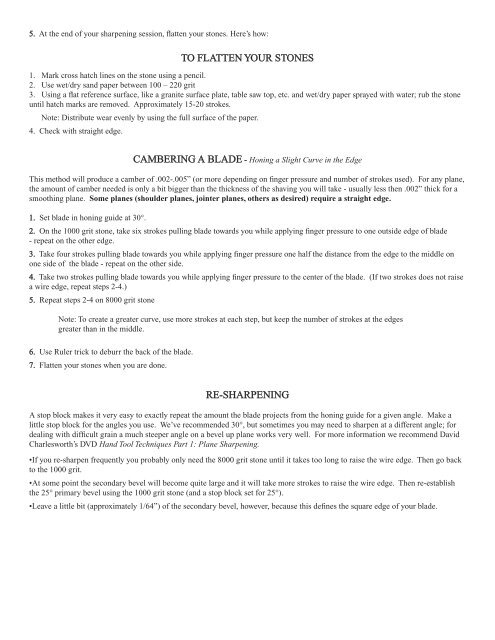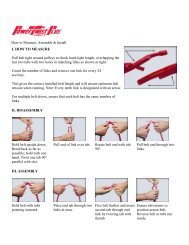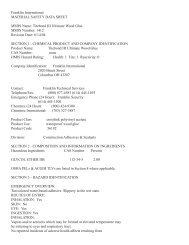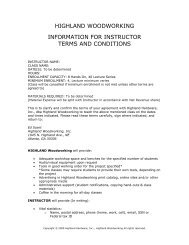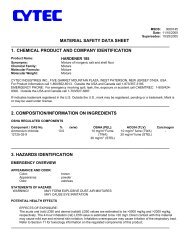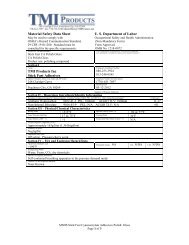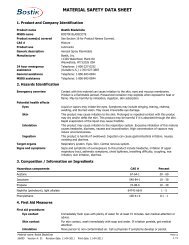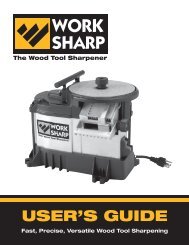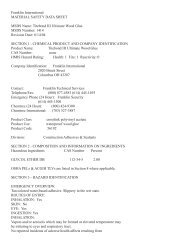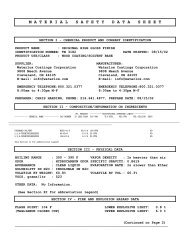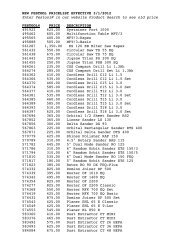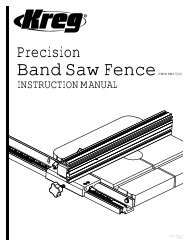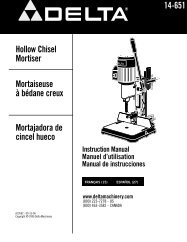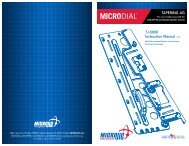BASIC PLANE BLADE SHARPENING - Highland Woodworking
BASIC PLANE BLADE SHARPENING - Highland Woodworking
BASIC PLANE BLADE SHARPENING - Highland Woodworking
Create successful ePaper yourself
Turn your PDF publications into a flip-book with our unique Google optimized e-Paper software.
5. At the end of your sharpening session, flatten your stones. Here’s how:<br />
TO FLATTEN YOUR STONES<br />
1. Mark cross hatch lines on the stone using a pencil.<br />
2. Use wet/dry sand paper between 100 – 220 grit<br />
3. Using a flat reference surface, like a granite surface plate, table saw top, etc. and wet/dry paper sprayed with water; rub the stone<br />
until hatch marks are removed. Approximately 15-20 strokes.<br />
Note: Distribute wear evenly by using the full surface of the paper.<br />
4. Check with straight edge.<br />
CAMBERING A <strong>BLADE</strong> - Honing a Slight Curve in the Edge<br />
This method will produce a camber of .002-.005” (or more depending on finger pressure and number of strokes used). For any plane,<br />
the amount of camber needed is only a bit bigger than the thickness of the shaving you will take - usually less then .002” thick for a<br />
smoothing plane. Some planes (shoulder planes, jointer planes, others as desired) require a straight edge.<br />
1. Set blade in honing guide at 30°.<br />
2. On the 1000 grit stone, take six strokes pulling blade towards you while applying finger pressure to one outside edge of blade<br />
- repeat on the other edge.<br />
3. Take four strokes pulling blade towards you while applying finger pressure one half the distance from the edge to the middle on<br />
one side of the blade - repeat on the other side.<br />
4. Take two strokes pulling blade towards you while applying finger pressure to the center of the blade. (If two strokes does not raise<br />
a wire edge, repeat steps 2-4.)<br />
5. Repeat steps 2-4 on 8000 grit stone<br />
Note: To create a greater curve, use more strokes at each step, but keep the number of strokes at the edges<br />
greater than in the middle.<br />
6. Use Ruler trick to deburr the back of the blade.<br />
7. Flatten your stones when you are done.<br />
RE-<strong>SHARPENING</strong><br />
A stop block makes it very easy to exactly repeat the amount the blade projects from the honing guide for a given angle. Make a<br />
little stop block for the angles you use. We’ve recommended 30°, but sometimes you may need to sharpen at a different angle; for<br />
dealing with difficult grain a much steeper angle on a bevel up plane works very well. For more information we recommend David<br />
Charlesworth’s DVD Hand Tool Techniques Part 1: Plane Sharpening.<br />
•If you re-sharpen frequently you probably only need the 8000 grit stone until it takes too long to raise the wire edge. Then go back<br />
to the 1000 grit.<br />
•At some point the secondary bevel will become quite large and it will take more strokes to raise the wire edge. Then re-establish<br />
the 25° primary bevel using the 1000 grit stone (and a stop block set for 25°).<br />
•Leave a little bit (approximately 1/64”) of the secondary bevel, however, because this defines the square edge of your blade.


